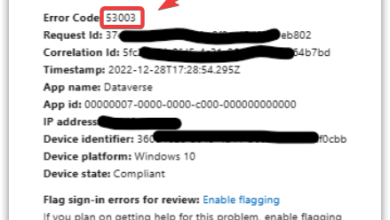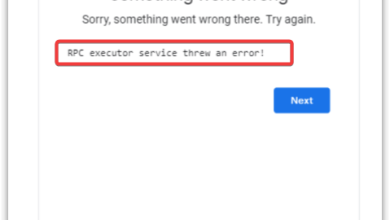How to Turn off Microsoft-Verified Apps in Windows [2024]
- Microsoft-verified apps are those that have been tested for safety and compatibility and are available through the Microsoft Store.
- You might want to disable Microsoft verified apps feature if you need to use software not available in the Microsoft Store, but it's important to only download from trusted sources and keep security software up-to-date.
- To disable Microsoft verified apps, change settings via Windows Settings, Command Prompt, Group Policy, or Registry Editor, based on your Windows version and expertise.
By default, your system is set to display the error message “The app you are trying to install isn’t a Microsoft-verified app” for apps not verified by Microsoft. This typically happens when attempting to install third-party apps from the internet that do not meet the company’s safety standards.
Windows does this to prevent potential infections of your PC by viruses or malware. However, there may be instances where there is no alternative for the app on the Microsoft Store, or the developers are trustworthy, yet you are unable to install it on your PC. Let’s explore your options!
Table of Contents
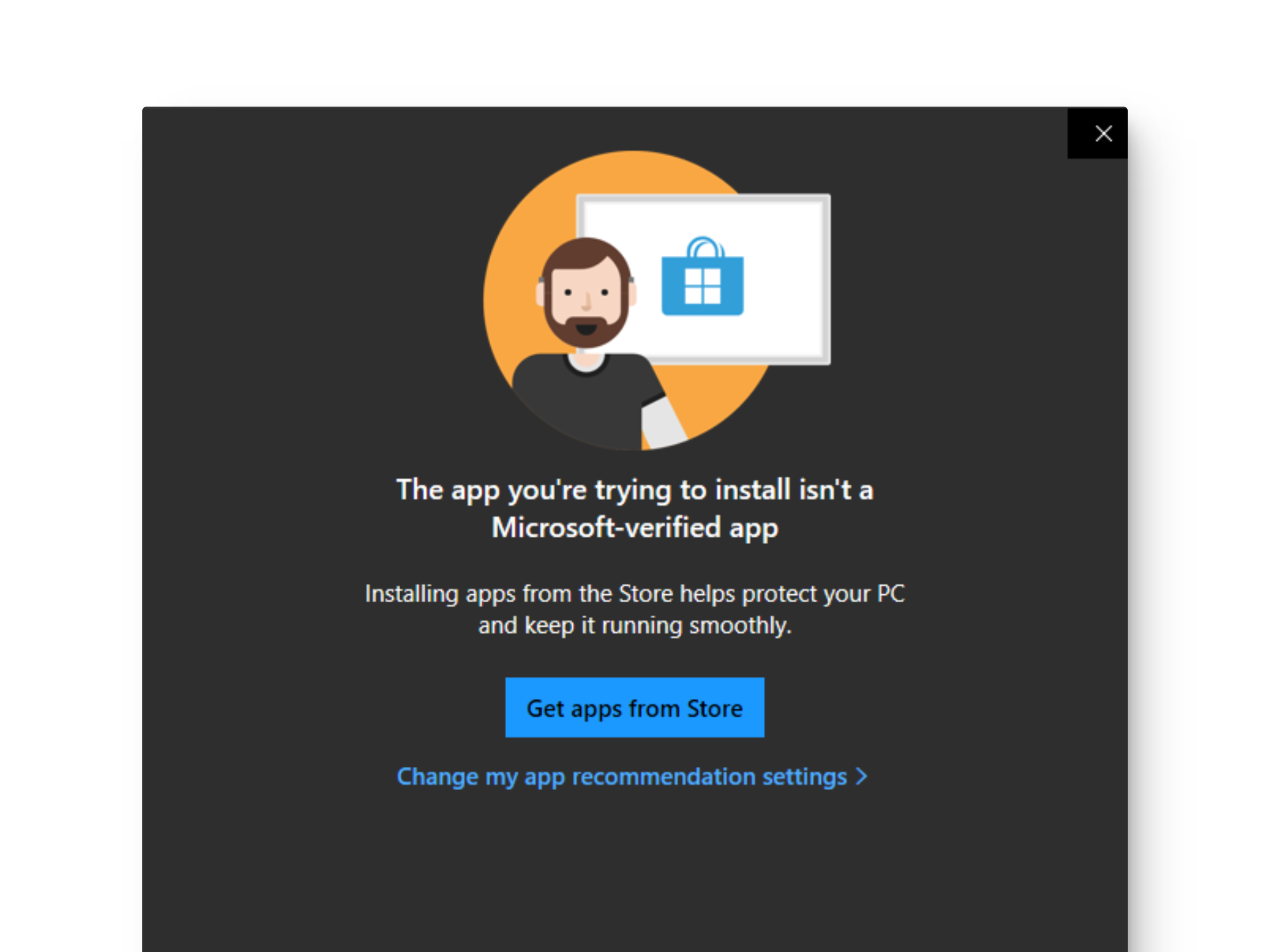
What Are Microsoft-Verified Apps?
Microsoft-verified apps generally pertain to those accessible in the Microsoft Store. Third-party developers can enhance the integrity of their programs by digitally signing them through Microsoft Authenticode Technology. This measure helps eliminate errors for Windows users. Unfortunately, not all developers choose to undergo this process, resulting in warning pop-ups.
It’s important to note that the absence of verification doesn’t necessarily imply malicious intent, but rather to protect your system in an un-risked environment. Nevertheless, it does shift the responsibility of ensuring the app’s safety, and ultimately, the security of your system, onto the user.
READ MORE: [FIX] App you’re trying to Install isn’t a Microsoft-verified ➜
When You Should Consider Turning Off Microsoft Verified Apps
Even with the extensive app library offered by the Microsoft Store, there may be instances where you find yourself needing to install an unverified third-party app. While Microsoft-verified apps are known for their safety, security, and compatibility with your operating system, there are various reasons you might seek alternatives.
These reasons include unique app-specific features, interface preferences, customization possibilities, a desire for experimentation with different software, and exploration of developer opportunities — features that may not be offered by authorized apps. Disabling the verification feature provides you with more freedom because, after all, who likes being confined to limitations and restrictions?
However, it’s essential to exercise caution and follow these safety measures when installing unverified apps:
- Download software from trusted and official sites only.
- Avoid installing cracked versions of paid programs.
- Refrain from visiting suspicious websites.
- Refer to reviews published in forums and reputable tech sites.
- Always enable Windows Defender or an antivirus program.
- Use online tools to scan download links and check for link security.
- Create a backup point in case the app turns out to be malicious and you need to restore your data.
READ MORE: How to download Microsoft Store apps without store? ➜
How to Turn off Microsoft Verified Apps
You can turn off Microsoft-verified apps using several methods, and your choice may depend on your ease and the Windows edition you are running.
1. Via Windows Settings
The easiest method of disabling verification is via Windows Settings as it lets you control the operating system and its related app permissions from a single place.
- Head over to the Settings app by pressing Windows key + i on your keyboard.
- Click on Apps on the left pane and go to Advanced App Settings.
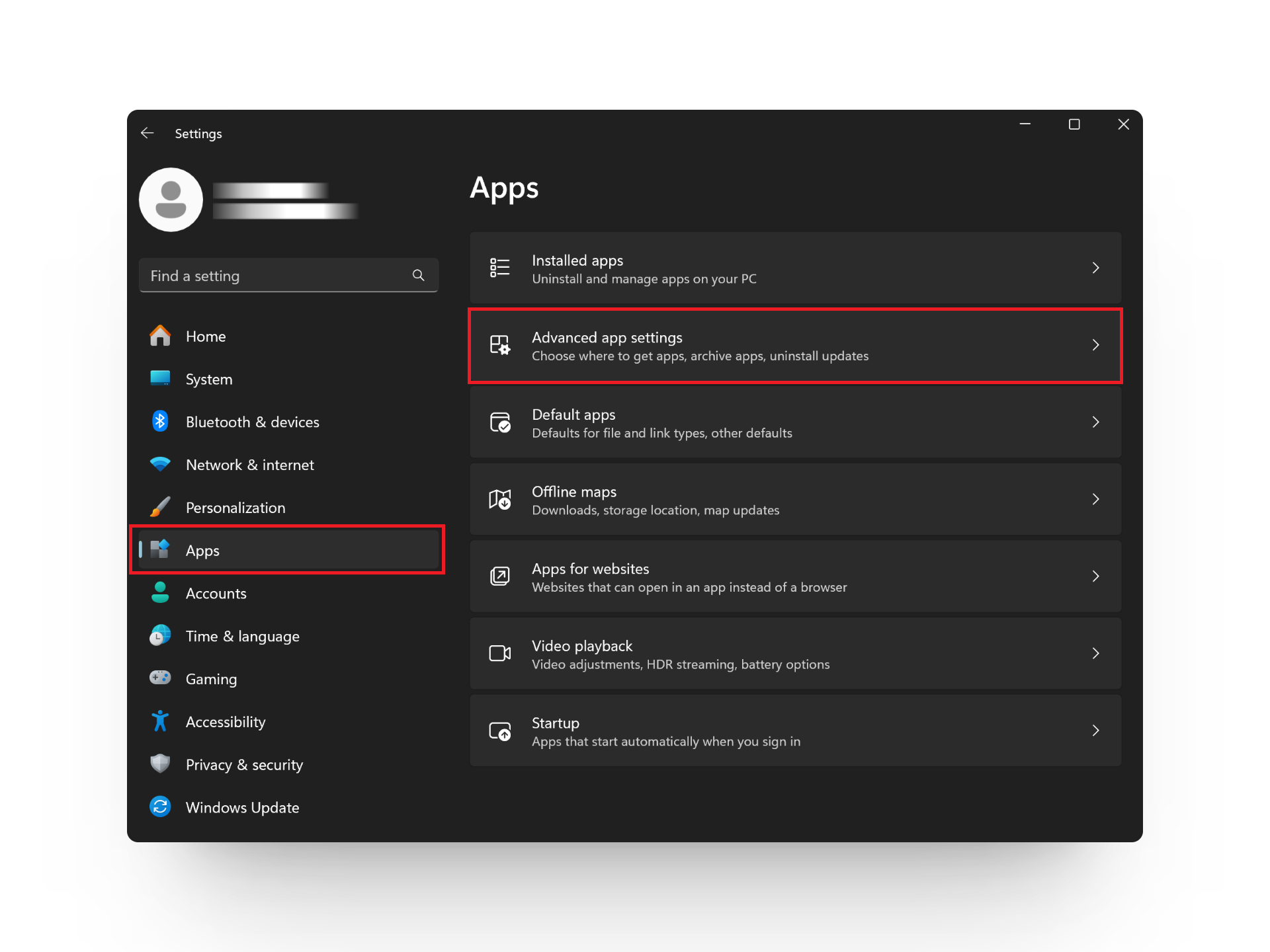
- Click to view the drop-down menu for Choose where to get apps and select Anywhere.
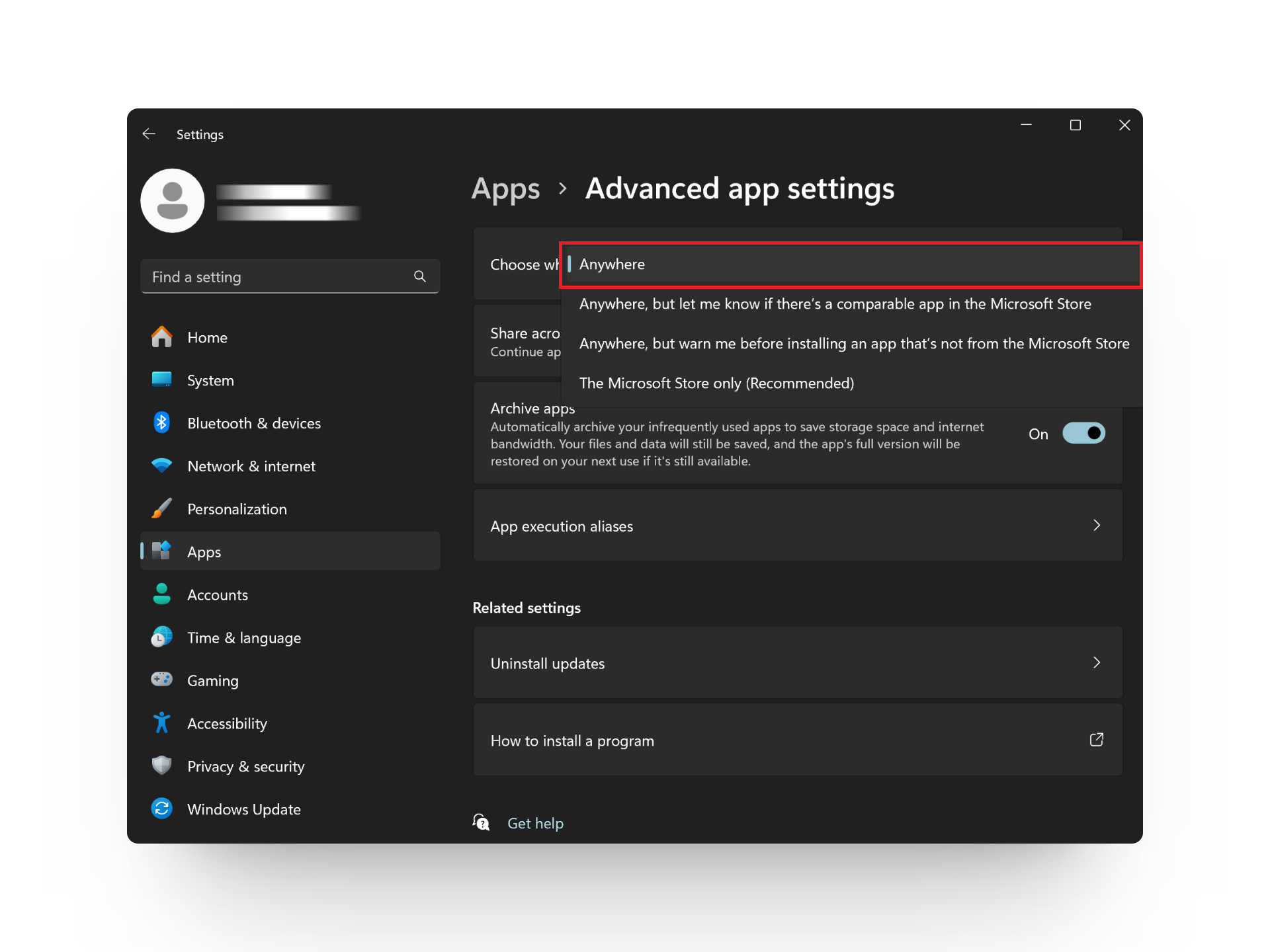
2. Disable S Mode
When S Mode is enabled, it restricts your computer to only install and run apps available in Microsoft Store. Fortunately, you can disable this mode to remove this limitation and install any third-party app from a platform of your choice.
- Launch the Settings app.
- Go to the System > Activation.
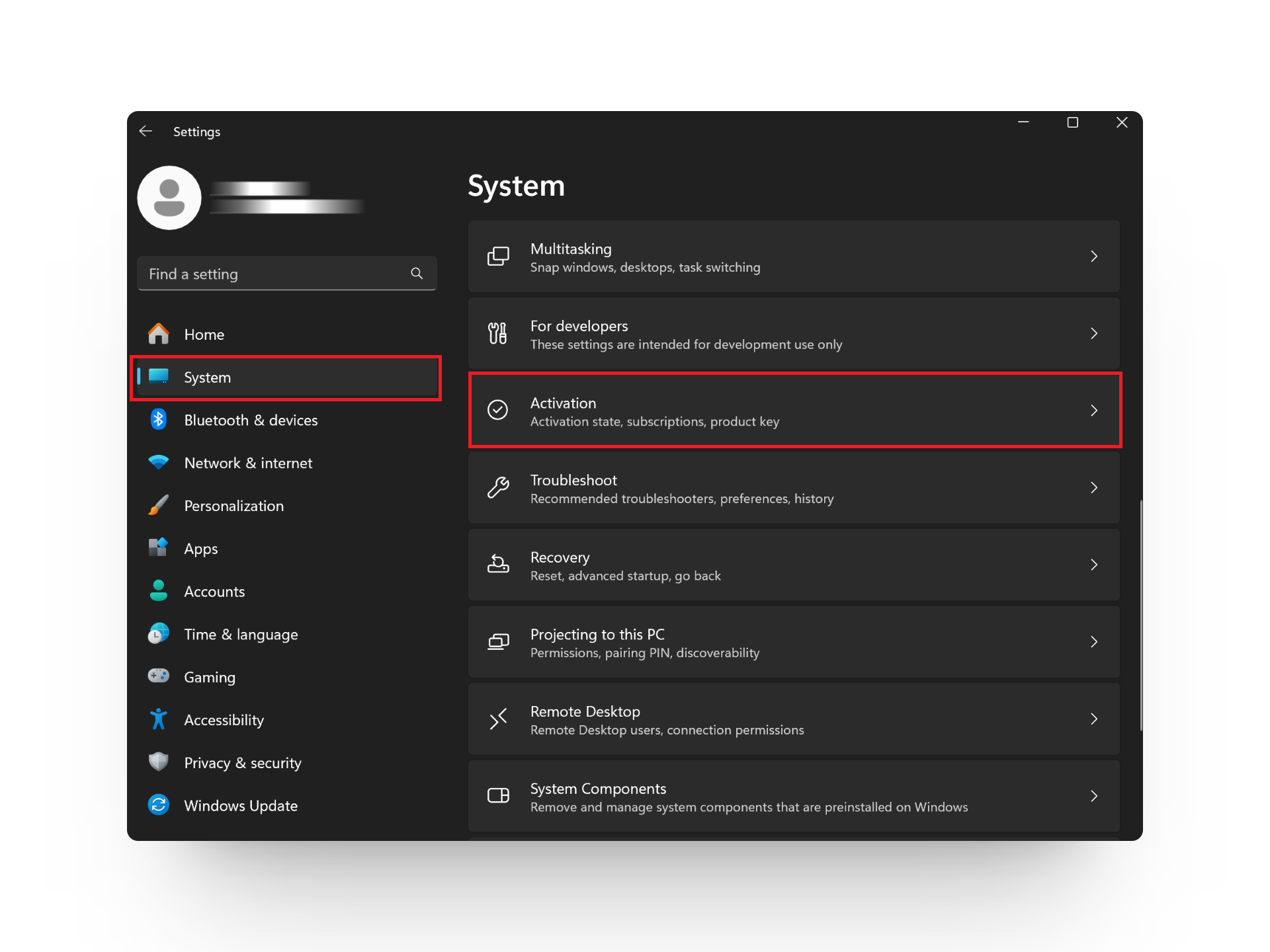
- Click on S Store and hit the Open Store button.
- Click on the Get button.
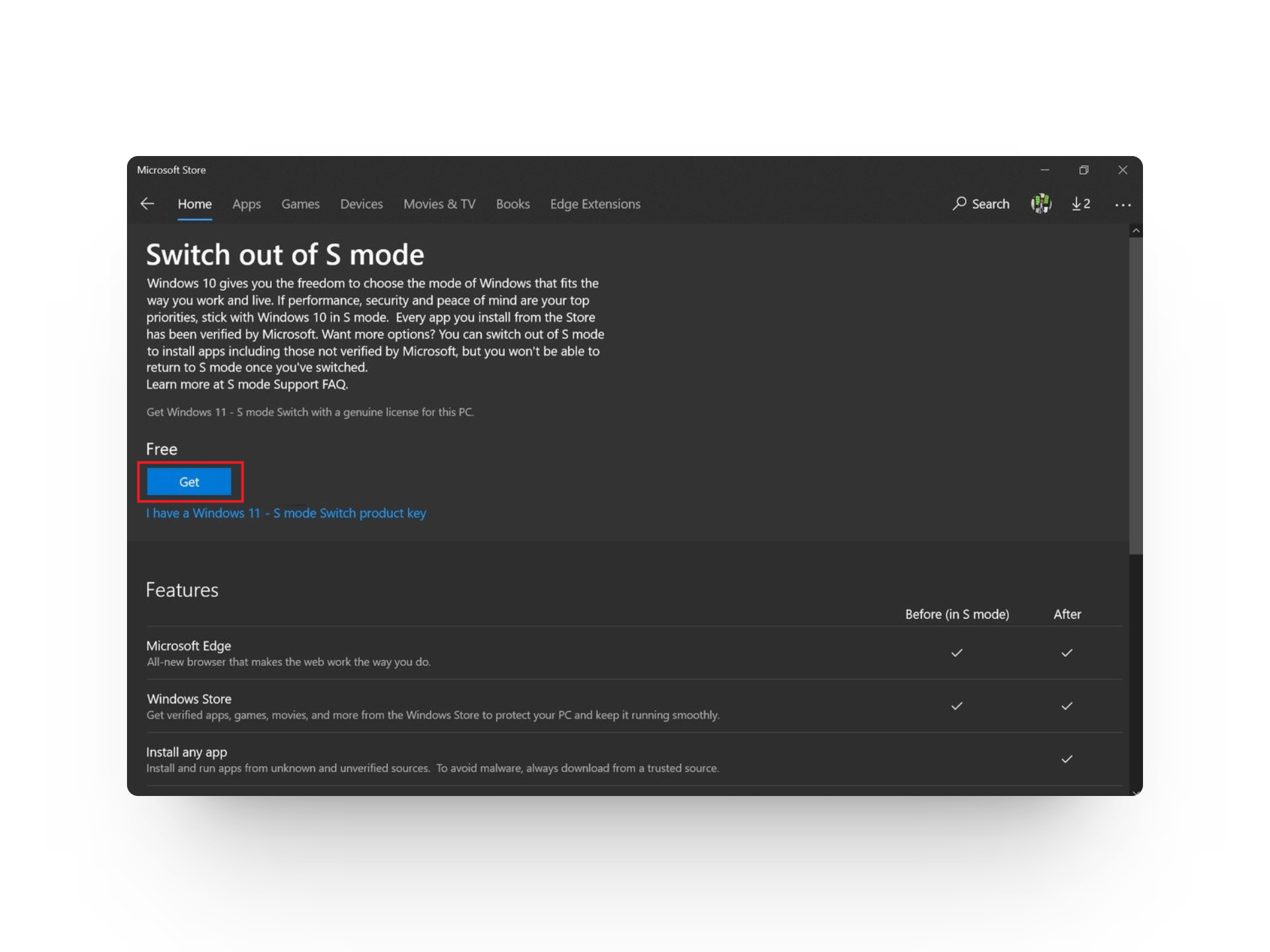
- Continue following the on-screen instructions to get out of S mode.
READ MORE: Can’t Switch Out Of S Mode on Windows 11? Here’s the Fix! ➜
3. Use the Command Prompt
The Windows Command Line Interpreter serves as a convenient alternative method, particularly for those comfortable using it. With just a single command, you can effortlessly implement the desired changes.
- Press Windows key + S to open Windows Search.
- Type cmd and click on Run as administrator.
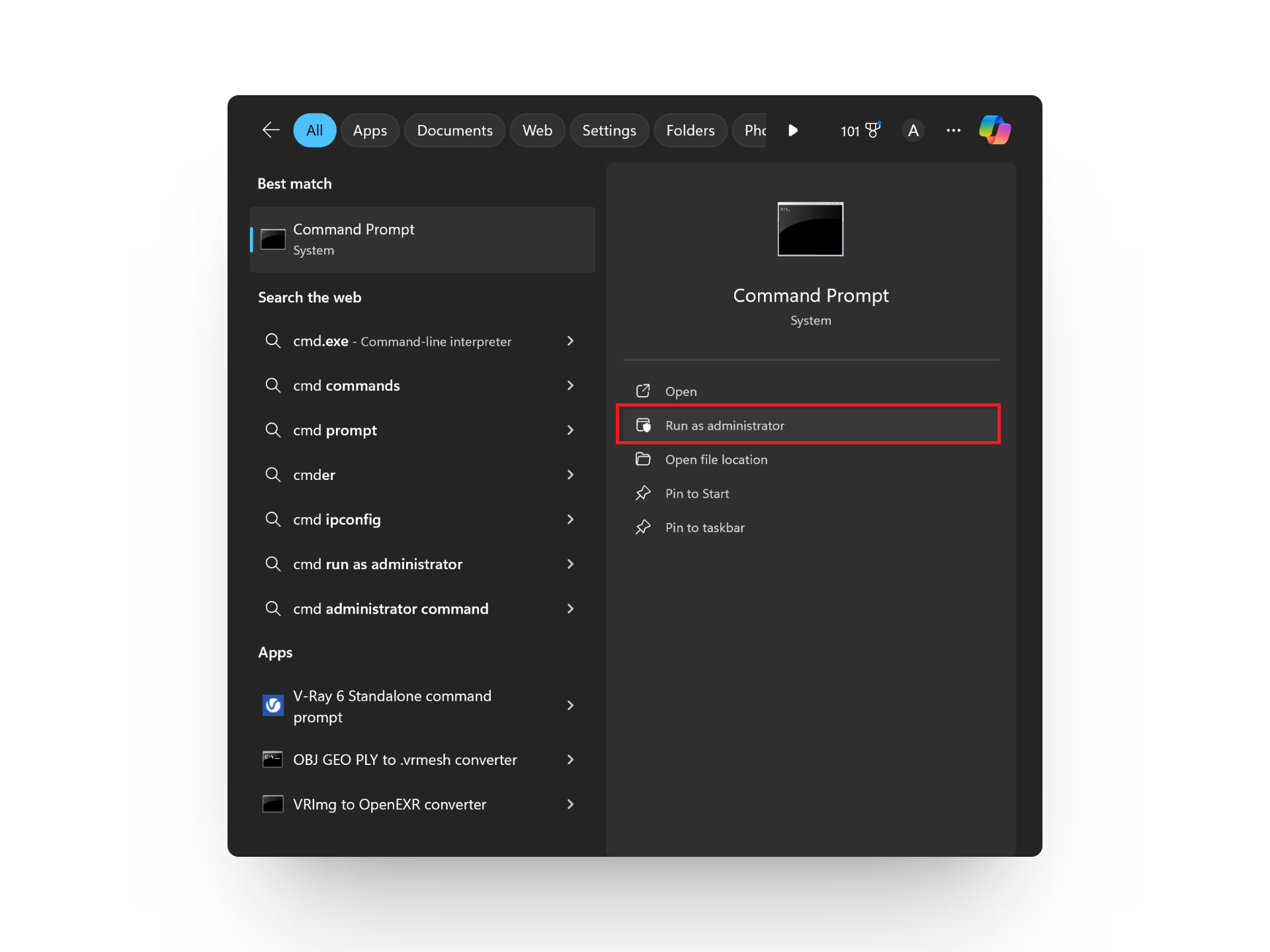
- Enter the following command in the prompt and hit Enter to run it:
HKEY_LOCAL_MACHINE\SOFTWARE\Microsoft\Windows\CurrentVersion\Explorer /v AicEnabled /t REG_SZ /d Anywhere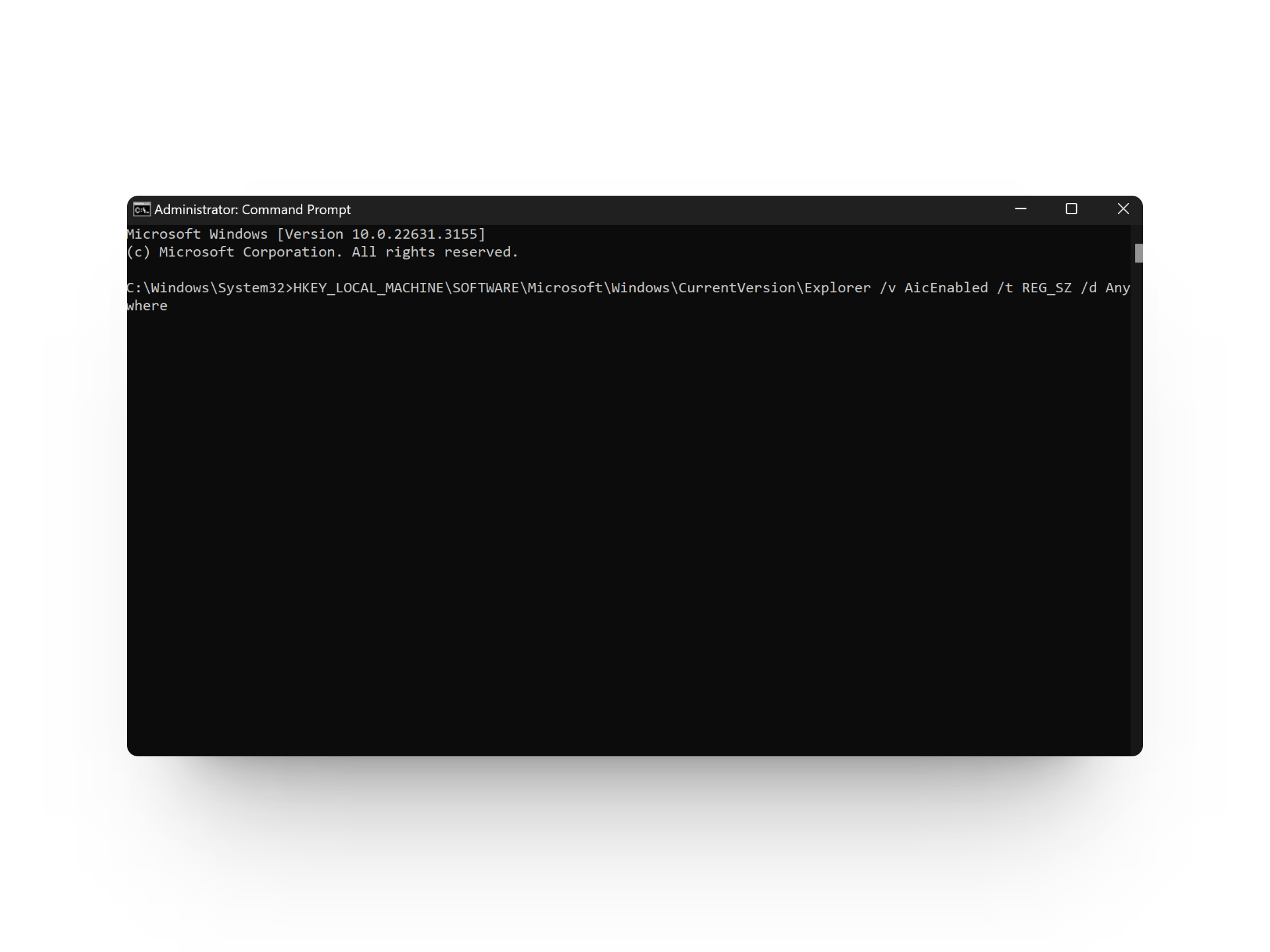
4. Via the Group Policy Editor
If your PC is part of an organization or if you need to apply settings across multiple PCs within that organization, you can use the Group Policy Editor.
- Press Windows key + R to open the Run dialog box.
- Type in gpedit.msc and click OK.
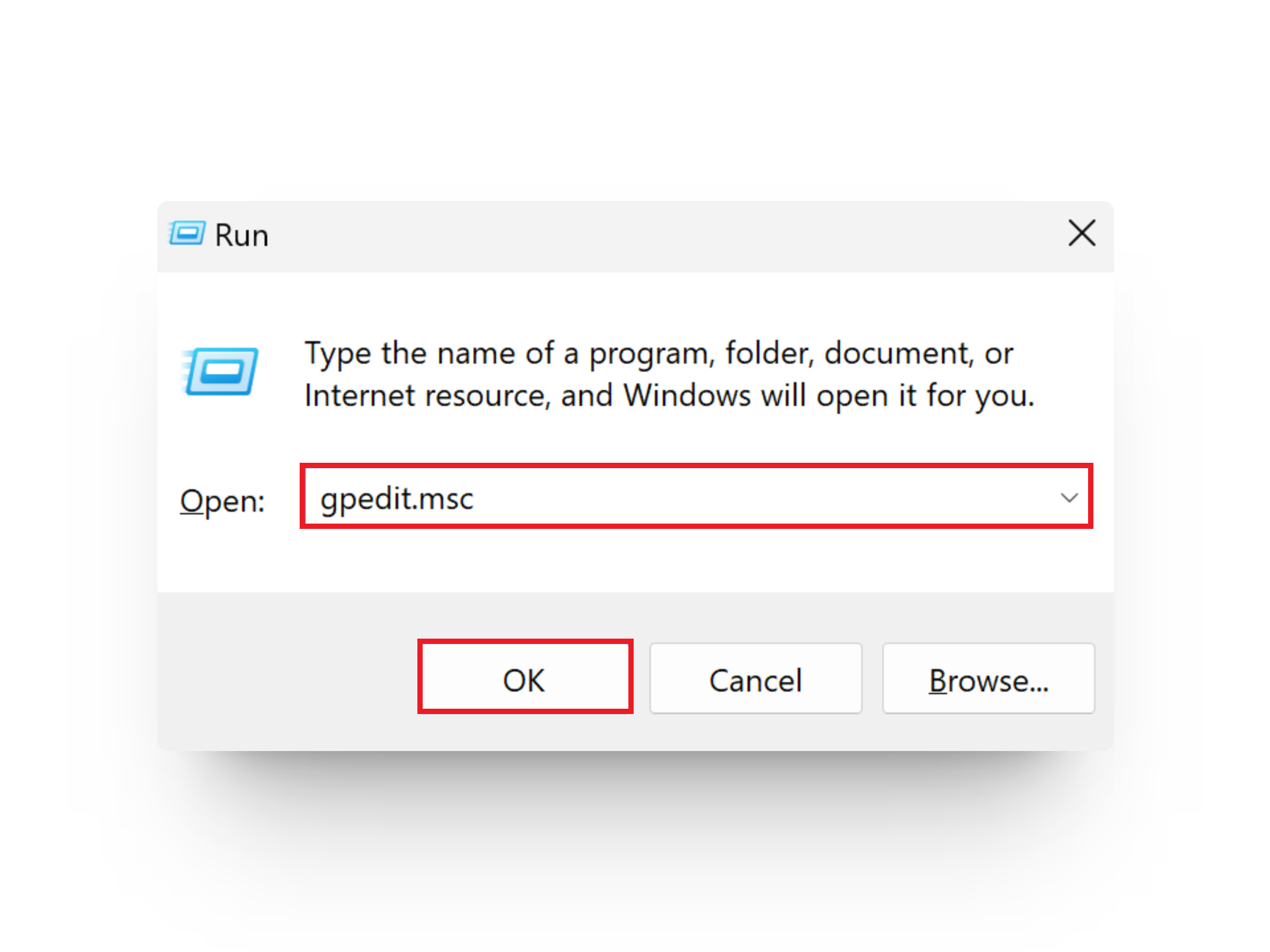
- Navigate to Computer Configuration > Administrative Templates > Windows Components > Windows Defender SmartScreen > Explorer.
- Then double-click on Configure App Install Control.
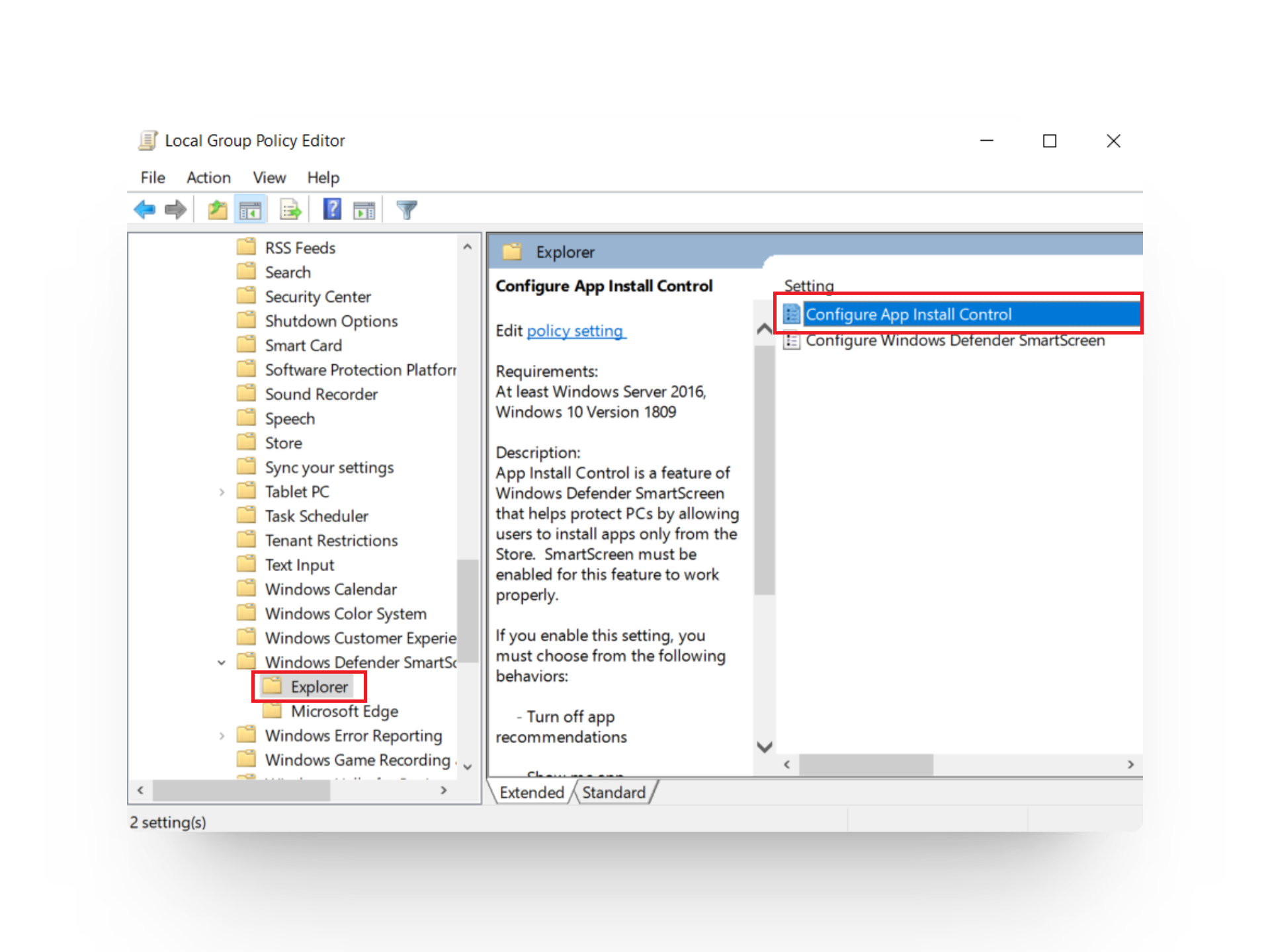
- In the pop-up window, choose Not Configured or Disabled, and click OK.
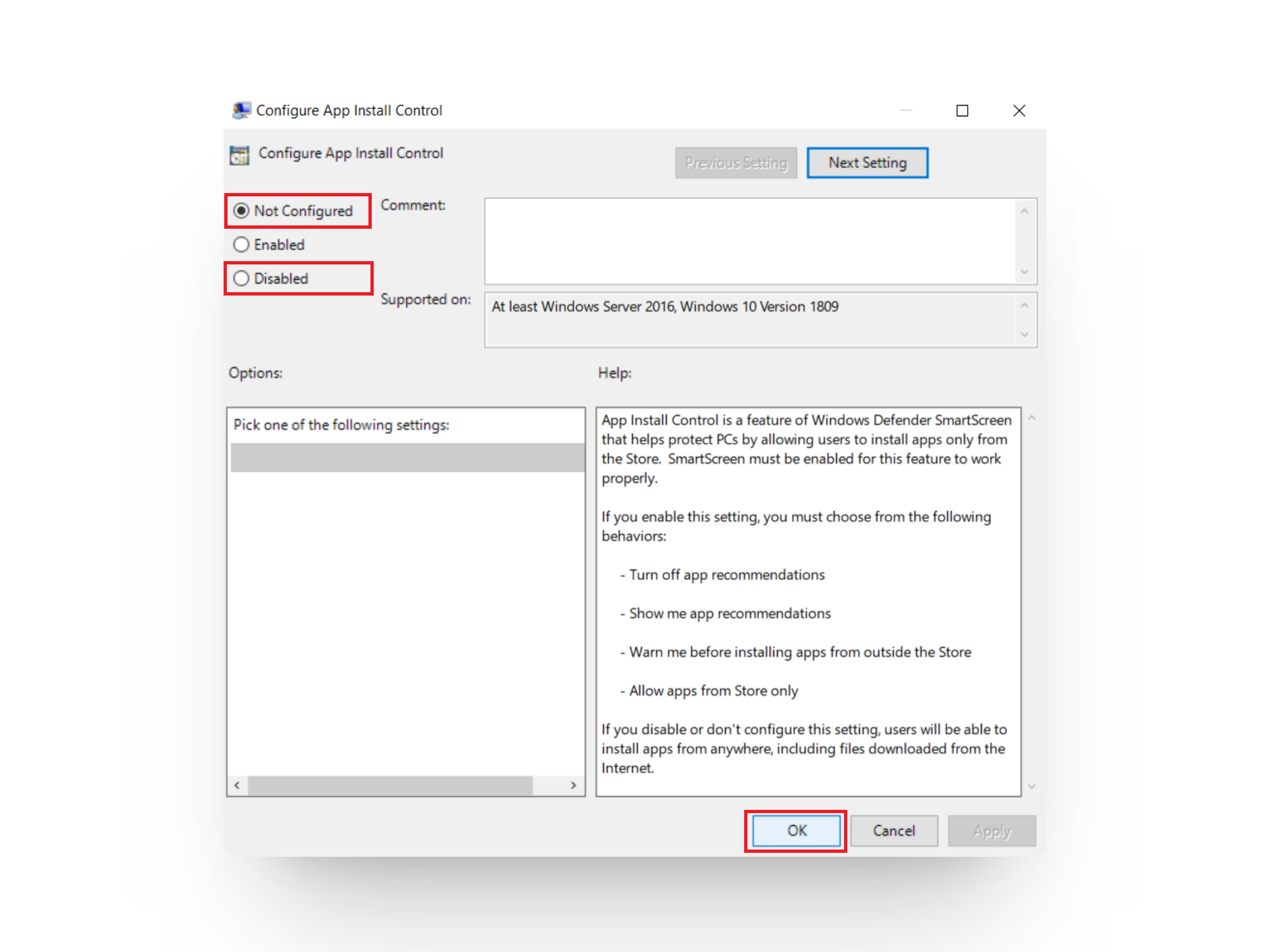
READ MORE: How to Open Local Group Policy Editor on Windows? ➜
5. With the Registry Editor
As a final method, you have the option to edit registry values to configure settings on your system. It’s essential to note that this approach should only be pursued if none of the previous methods proves effective.
Editing registry values requires extreme caution, as any mistake or error during this process may lead to system failure or corruption. Prior to proceeding, it is imperative to create a backup of the Windows Registry for added security.
- Press Windows key + S to open Windows Search.
- Search for Registry Editor and click on Open.
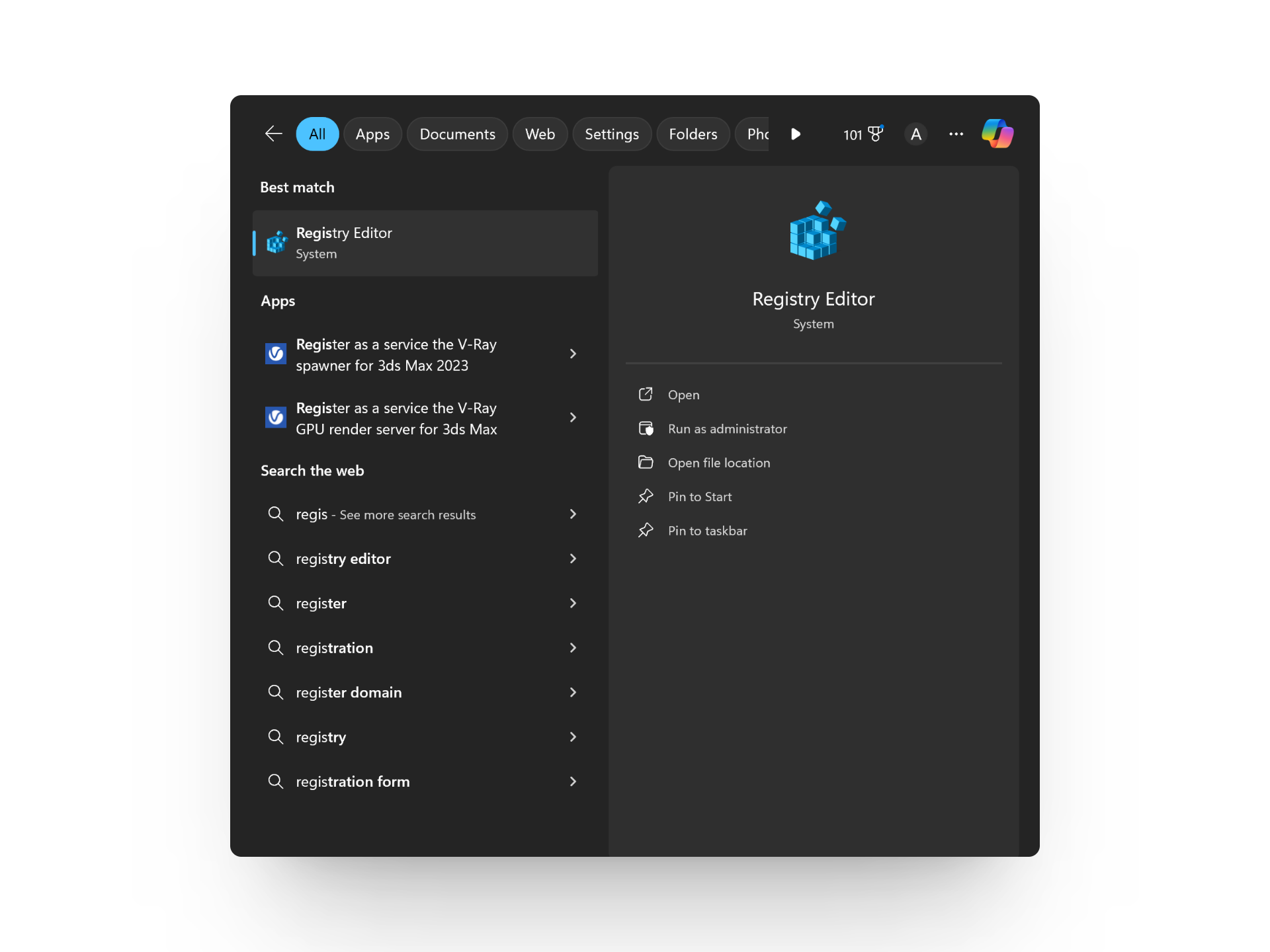
- Navigate to HKEY_LOCAL_MACHINE > SOFTWARE > Microsoft > Windows > CurrentVersion > Explorer.
- Right-click on Explorer and click New.
- Then choose String value. Name it AicEnabled.
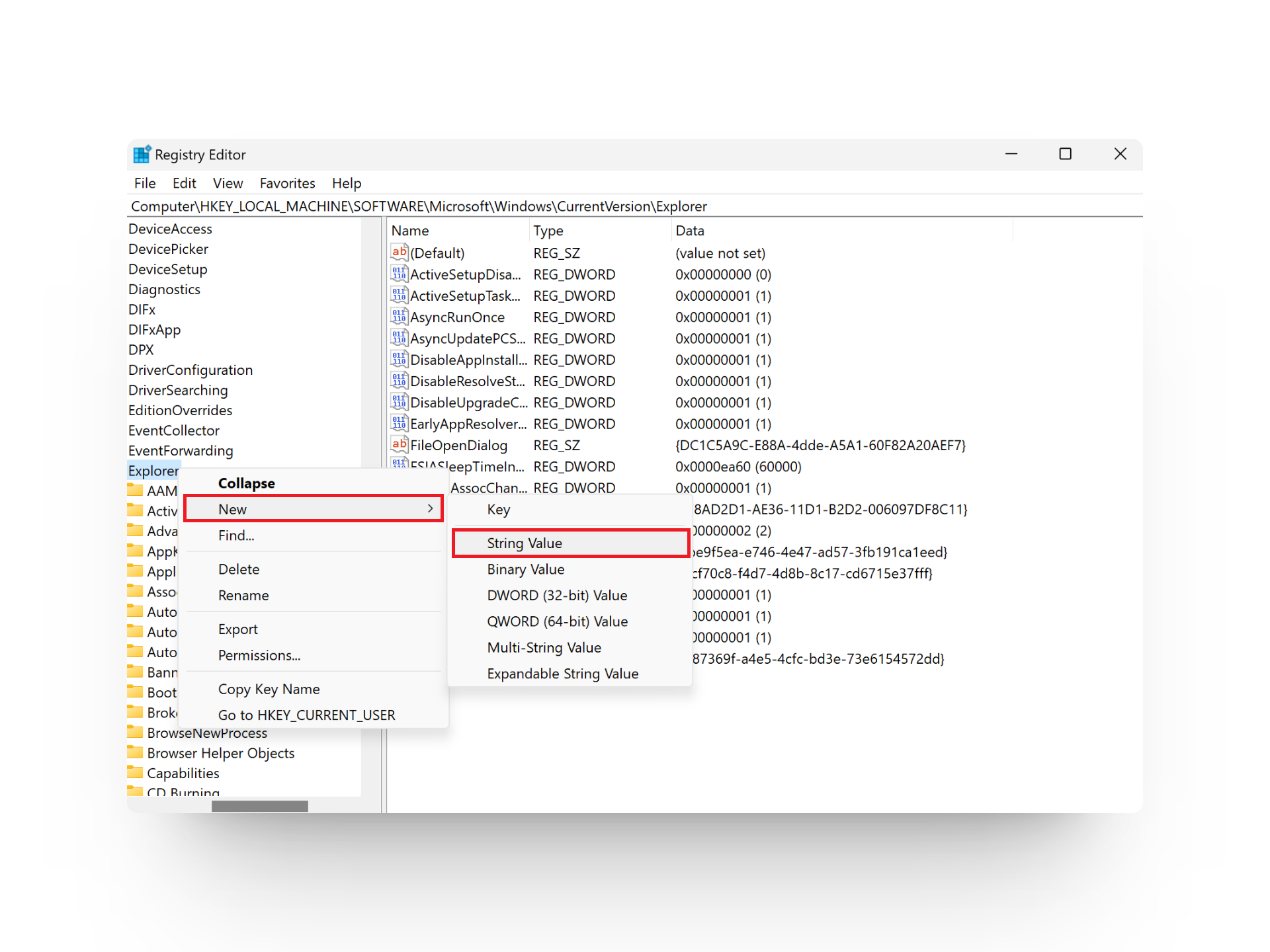
- Double-click on AicEnabled and change its Value data field to Anywhere.
- Click OK and close the Registry Editor.
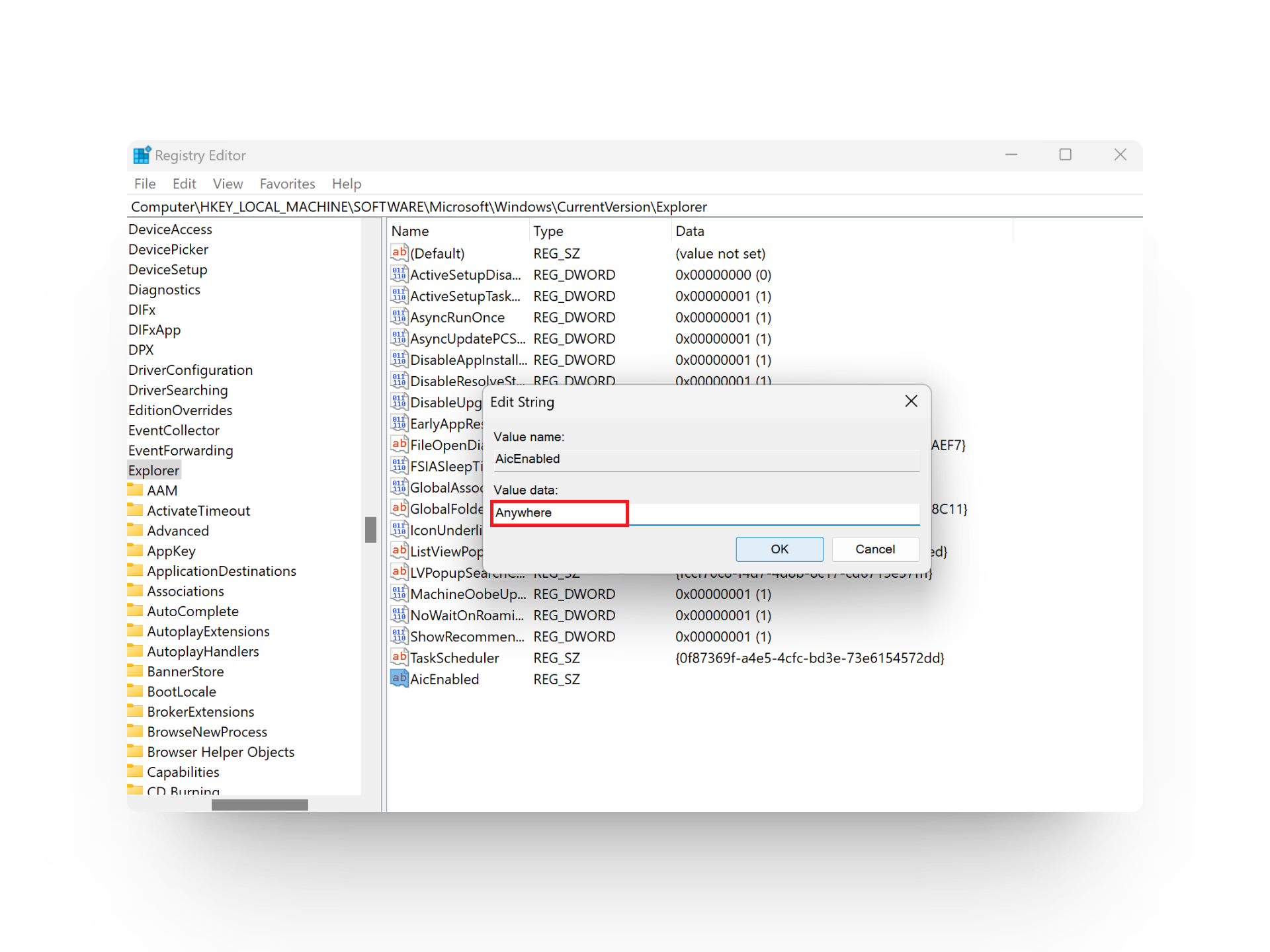
- Restart your PC to apply these changes.
READ MORE: How to Delete Broken Registry Items on Windows? ➜
Bottom Line
It’s essential to balance convenience with security in this case. While turning off this feature grants greater flexibility and control, it also exposes your system to potential risks.
-
Yes, you can re-enable Microsoft-verified apps after disabling it. Simply go to Settings > Apps > Advanced App Settings > Choose where to get apps, and then select “Prefer apps from the Microsoft Store.”
Not necessarily. While Microsoft’s verification process helps minimize risks, you can take precautionary measures when downloading from non-verified sources. This includes checking reviews, scanning download links, using antivirus software, and so on.
Unfortunately, no. The verification requirement applies to applications as a whole. You can either choose to install only verified apps or install all of them regardless. There is no option to selectively disable verification for specific apps.
If you know how to check for legitimate sources and exclusively download applications from reputable developers, disabling Microsoft-verified apps may not expose your system to immediate threats or issues. However, if you share your PC with others who may not be familiar with source verification, or if you lack the knowledge to validate sources, it is best to leave the feature enabled.
 Reviewed by
Reviewed by 


